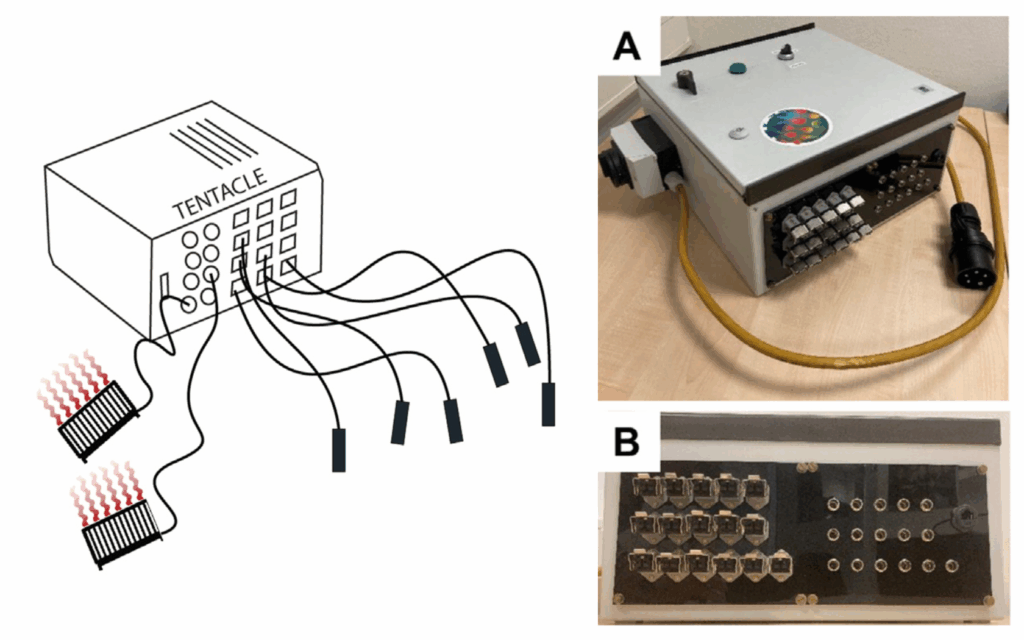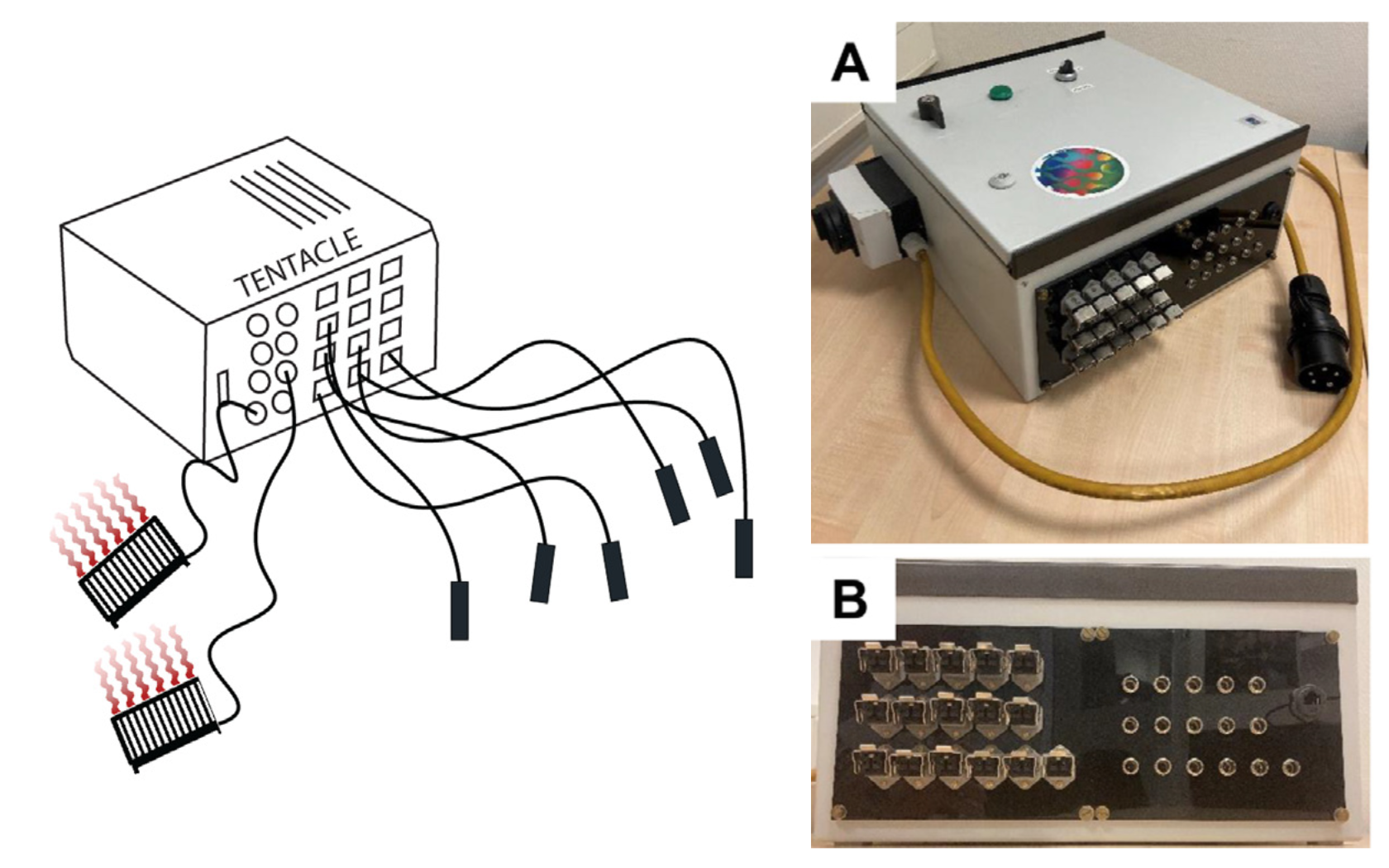
Unleashing Creativity: Exploring the Intriguing World of Tentacle Cabinet Design
In the realm of interior design, where innovation meets functionality, a captivating trend has emerged: tentacle cabinet design. This unique aesthetic, often inspired by marine biology and fantasy art, incorporates flowing, organic shapes reminiscent of tentacles into the structure and ornamentation of cabinets. This article delves into the fascinating world of tentacle cabinet design, exploring its origins, key characteristics, applications, and the artistic vision behind this unconventional approach.
The Genesis of Tentacle Aesthetics
The inspiration for tentacle cabinet design can be traced to several sources. The natural world, particularly the ocean, provides a wealth of visual cues. The graceful undulations of jellyfish, the intricate patterns of coral, and the powerful grip of octopus tentacles all contribute to the aesthetic vocabulary of this design style. Furthermore, fantasy literature and art, with their depictions of mythical creatures and otherworldly landscapes, have played a significant role in shaping the visual language of tentacle cabinet design. Artists and designers often draw upon these fantastical elements to create cabinets that are both functional and visually stunning.
Key Characteristics of Tentacle Cabinet Design
Several defining characteristics distinguish tentacle cabinet design from more conventional cabinet styles:
- Organic Shapes: The most prominent feature is the incorporation of flowing, curved lines that mimic the appearance of tentacles. These shapes can be integrated into the cabinet’s structure, ornamentation, or both.
- Textural Complexity: Tentacle cabinet designs often feature a variety of textures, ranging from smooth, polished surfaces to rough, textured finishes. This textural complexity adds depth and visual interest to the cabinets.
- Biomorphic Forms: The overall form of the cabinet may be inspired by living organisms, creating a sense of organic growth and movement.
- Artistic Detailing: Intricate details, such as sculpted tentacles, engraved patterns, and hand-painted finishes, are common in tentacle cabinet design. These details enhance the artistic quality of the cabinets and make them truly unique.
- Unconventional Materials: Designers often experiment with unconventional materials, such as resin, fiberglass, and metal, to achieve the desired aesthetic effects.
Applications of Tentacle Cabinet Design
Tentacle cabinet design can be applied to a wide range of cabinet types, including:
- Kitchen Cabinets: In the kitchen, tentacle cabinet design can be used to create a dramatic and visually striking focal point. Cabinets with tentacle-inspired handles, sculpted doors, or flowing countertops can transform an ordinary kitchen into a work of art.
- Bathroom Vanities: Bathroom vanities with tentacle-like legs or sculpted basins can add a touch of whimsy and sophistication to the bathroom.
- Living Room Cabinets: In the living room, tentacle cabinet design can be used to create unique storage solutions that double as artistic statements. Cabinets with tentacle-inspired shelving or sculpted doors can add a touch of personality to the space.
- Display Cabinets: Display cabinets with tentacle-like frames or sculpted interiors can be used to showcase collectibles and artwork in a visually appealing way.
- Custom Furniture: The principles of tentacle cabinet design can also be applied to custom furniture pieces, such as desks, tables, and chairs.
The Artistic Vision Behind Tentacle Cabinet Design
The designers who create tentacle cabinet design are driven by a desire to push the boundaries of traditional furniture design and to create pieces that are both functional and visually stunning. They are inspired by the beauty and complexity of the natural world, as well as the imaginative possibilities of fantasy art. Their goal is to create cabinets that are not only useful but also works of art that can be admired and appreciated for their aesthetic qualities.
One of the key challenges in tentacle cabinet design is to balance the artistic vision with the practical requirements of furniture design. The cabinets must be structurally sound, functional, and comfortable to use. The designer must carefully consider the materials, construction techniques, and ergonomics to ensure that the cabinets meet these requirements. At the same time, the designer must be able to express their artistic vision through the form, texture, and detailing of the cabinets.
Tentacle cabinet design often incorporates elements of surprise and unexpectedness. The flowing lines and organic shapes can create a sense of movement and dynamism, while the intricate details can reveal hidden depths and complexities. The cabinets may also incorporate elements of humor or whimsy, adding a touch of playfulness to the design.
Materials and Techniques in Tentacle Cabinet Design
The materials used in tentacle cabinet design can vary widely, depending on the desired aesthetic and the functionality of the cabinet. Wood is a common material, but it is often used in unconventional ways. For example, wood may be sculpted into flowing shapes or combined with other materials, such as metal or glass. Resin and fiberglass are also popular materials, as they can be easily molded into complex shapes and can be finished in a variety of colors and textures.
The construction techniques used in tentacle cabinet design are often more complex than those used in traditional furniture design. Sculpting, carving, and molding are common techniques. These techniques require a high level of skill and craftsmanship. The designer must also be familiar with the properties of the materials being used and must be able to adapt the construction techniques to suit the specific design.
The Future of Tentacle Cabinet Design
As technology advances and new materials become available, the possibilities for tentacle cabinet design are likely to expand even further. 3D printing, for example, could allow designers to create even more complex and intricate shapes. New materials, such as self-healing polymers and shape-memory alloys, could also open up new possibilities for the design and construction of tentacle cabinets.
Furthermore, the growing interest in sustainable design could lead to the development of tentacle cabinets that are made from recycled materials or that incorporate energy-efficient lighting and appliances. The future of tentacle cabinet design is likely to be shaped by a combination of artistic innovation, technological advancements, and environmental concerns.
Finding and Commissioning Tentacle Cabinet Designs
Finding pre-made tentacle cabinet designs can be challenging, as this style is relatively niche. Online marketplaces specializing in unique furniture and art pieces, such as Etsy or custom furniture websites, are good places to start your search. You can also explore the portfolios of independent furniture designers and artists who specialize in organic or biomorphic forms.
Commissioning a custom tentacle cabinet design offers the greatest flexibility and allows you to tailor the piece to your specific needs and preferences. When commissioning a design, it’s crucial to find a designer who understands your vision and has experience working with the materials and techniques required for this style. Be prepared to discuss your budget, desired dimensions, and specific aesthetic preferences in detail. A good designer will work with you to create a piece that is both beautiful and functional.
Caring for Your Tentacle Cabinet
The care and maintenance of a tentacle cabinet will depend on the materials used in its construction. Wood cabinets should be cleaned with a soft cloth and a wood cleaner specifically designed for furniture. Resin and fiberglass cabinets can be cleaned with a damp cloth and a mild detergent. Avoid using abrasive cleaners or harsh chemicals, as these can damage the finish. It’s also important to protect your tentacle cabinet from direct sunlight and extreme temperatures, as these can cause the materials to fade or warp.
Regular dusting and cleaning will help to keep your tentacle cabinet looking its best for years to come. With proper care, your tentacle cabinet will not only serve as a functional piece of furniture but also as a unique and captivating work of art.
In conclusion, tentacle cabinet design represents a fascinating intersection of art, design, and functionality. By drawing inspiration from the natural world and fantasy art, designers are creating cabinets that are both visually stunning and incredibly unique. Whether you are looking to add a touch of whimsy to your kitchen, a touch of sophistication to your bathroom, or a touch of personality to your living room, tentacle cabinet design offers a wealth of possibilities. [See also: Custom Furniture Design Trends] and [See also: Unique Cabinet Hardware Ideas]

